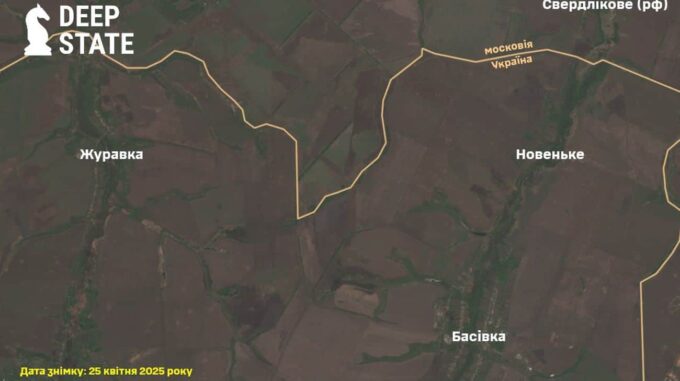DeepState has uncovered an important detail from the front in Sumy region: which sectors lacked engineering and fortification structures and how this affected the course of the battle

Ukrainian analysts from the independent project DeepState have published new data regarding the state of fortifications in Sumy Region prior to the start of the latest wave of Russian offensives. According to their observations and research, a significant stretch of the front line in this area was left without the necessary engineering structures, which could have substantially impacted the Ukrainian forces’ defenses and the tactical situation on the battlefield. According to the analysis materials, at the end of September 2024 — immediately before enemy activity intensified — experts recorded on the map several areas where fortification works were being prepared. However, most of this territory, located inland approximately 20-25 kilometers from the state border, remained without proper engineering structures. This means that at the strategic planning level, Ukrainian military forces did not place sufficient emphasis on strengthening defensive lines in this region — it was mainly their positions, organized for personnel presence and holding, that were constructed, but there were no elements that could hinder enemy advances — such as anti-tank ditches, dragon’s teeth, or mines. A detailed analysis of satellite images from April 25, 2025, reveals a striking scale: near the sections Zhuravka-Novinke-Basivka, there is a complete absence of any fortifications extending to the line Hotin-Pisarivka-Kiyanitsia-Hrapivshchyna-Yunakivka. This confirms the thesis that, due to the lack of fortifications, the enemy concentrates significant pressure, attempting to breakout in this sector. Another important point, confirmed by military personnel and experts, is that the Russians concentrate maximum manpower in this area, trying to intensify pressure and attack weak points through unrestricted movement of forces. Meanwhile, DeepState specialists note that all observations have been confirmed through numerous interviews with Ukrainian soldiers, who assert that their only defense here consists of their personal positions and temporary fortifications made directly by the fighters on-site. The analysts pay particular attention to the fact that in this part of the front, there are no serious engineering advanced structures — anti-tank ditches, tetrahedrons (static obstacles symbolizing barriers for tanks), dragon’s teeth, hedgehogs, and other barriers. Even explosive engineer obstacles such as minefields, which could slow enemy advances, have not been constructed or are minimally deployed here, raising questions about the level of preparedness of the defense on this front. It’s important to emphasize that despite substantial activity from the Russians and the threat of breakthroughs, Ukrainian forces confirm that minefields, although quite challenging to establish due to ongoing hostilities, were nonetheless implemented. According to experts, reports of this are supported by data from brigades and local combatants who managed to install mine devices and delay the enemy in certain segments. This, in turn, indicates that even under intense hostile conditions, effective defensive structures could be built. In conclusion, the analysts underline that the incomplete fortifications and the lack of a comprehensive defensive line in this notorious sector likely became a factor allowing Russian forces to more actively concentrate their efforts there. This also signals that to strengthen defenses, it is not only necessary to respond quickly to emerging threats but also to prevent their emergence through the construction of reliable and advanced fortifications capable of countering the enemy’s numerical superiority and protecting Ukrainian defenders from catastrophic breakthroughs in the future. Such research by DeepState helps better understand the real state of the front and highlights priority directions for strengthening defenses. The era when irresponsibility and negligence caused losses is passing. It is now crucial to act swiftly and decisively to prevent similar situations from recurring and to ensure a strong rear for future battles.

